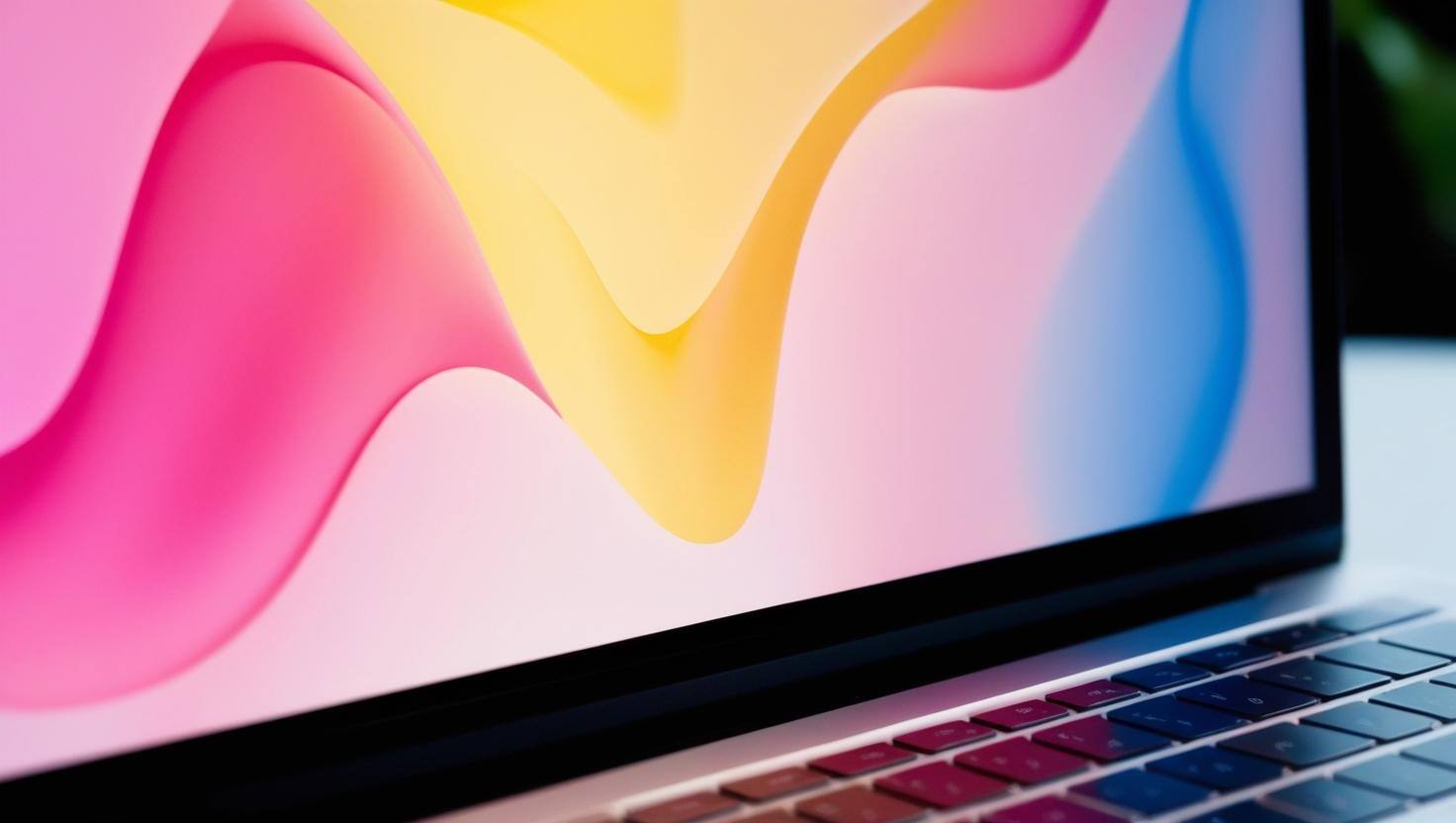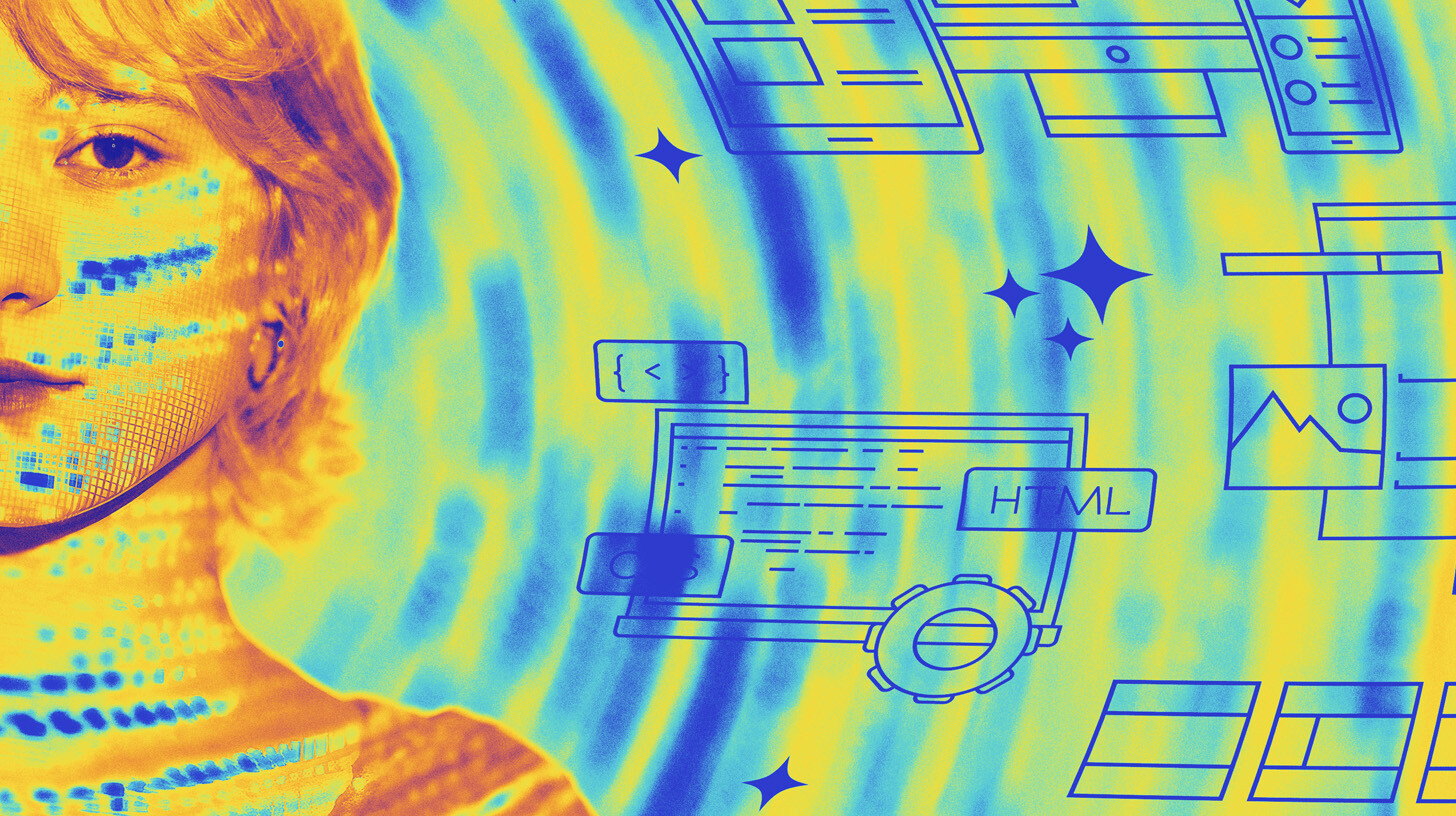Imagine this: You’re racing against a deadline to deliver a user interface that doesn’t just meet expectations but wows your audience. You’re juggling feedback, trying to decode user data, and brainstorming ways to make the experience seamless. Now, what if you had a partner—not just a tool—that could crunch the data, identify patterns, and even offer creative suggestions?
That’s where AI is stepping in—not to take over but to collaborate.
In the past, AI was synonymous with automation—streamlining tasks, running A/B tests, and optimizing performance. But today, it’s evolving into a co-creator in UX design, capable of augmenting human creativity and enabling rapid iteration.
This article explores how AI is transforming digital experiences, busting myths that it stifles creativity, and showing how Experimenters and designers can embrace it to unlock new possibilities. Let’s dive in.
The Shift from Tool to Partner
AI has come a long way from being a backend tool used for basic automation. Thanks to advancements in machine learning and data processing, it’s now capable of generating insights, identifying opportunities, and even suggesting creative solutions.
In UX design, this means AI is no longer just a "support staff" running reports. Instead, it’s becoming a brainstorming buddy that enhances creativity and decision-making.
At its core, design thinking is about empathizing with users, ideating solutions, and testing them iteratively. AI fits seamlessly into this process by providing data-backed insights and scalability to improve user journeys like never before.
AI in design isn’t about replacing human creativity—it’s about expanding its potential to innovate.
Experience AI collaboration firsthand and explore AI’s real-world success stories.
Why Designers Need AI as a Partner
Designers and Experimenters are at the forefront of creating exceptional digital experiences, but let’s be honest—it's not always smooth sailing. Here are some of the common challenges in UX design and how AI steps in to help:
The Pain Points
-
Complexity Overload
User journeys are more diverse than ever, spanning devices, demographics, and behaviors. Balancing these complexities while optimizing for conversions is no small feat.
-
The Data Dilemma
Designers often have access to oceans of data but limited time or tools to extract actionable insights.
-
Speed vs. Creativity
Experimenters frequently feel the pressure to produce faster results without sacrificing creativity or quality.
How AI Helps
-
Streamlining Data Analysis
AI dives into vast datasets to uncover user patterns, making it easier to prioritize design changes with the highest impact.
-
Accelerating Testing
AI-powered tools like Evolv AI automate repetitive tasks like running A/B tests or optimizing layouts, freeing up time for more creative problem-solving.
-
Improving Personalization
Auto-segmentation enables Experimenters to discover hidden audience groups and tailor designs for their specific needs.
When AI acts as your design partner, it doesn’t just save time—it transforms how you think about solving problems.
Example of AI UX Collaboration
Spotlight: Continuous Optimization in Real Time
Let’s explore a hypothetical scenario to illustrate the power of continuous optimization in action. Imagine managing a high-traffic e-commerce site where user behavior can shift dramatically based on season, promotions, or even time of day. Traditional A/B testing falls short in this scenario—it’s too slow and requires substantial developer input to adjust designs mid-test. This is where AI-powered continuous optimization becomes a game-changer.
The Challenge
A media subscription service (hypothetical example) faces significant drop-offs in its multi-step signup flow. While the content is engaging, users abandon the process halfway through. The Experimenter needs a way to pinpoint and address friction points without waiting weeks for A/B test results.
How AI Steps In
Using continuous optimization, the system automatically adjusts key elements of the signup flow in real time, such as:
- Testing and optimizing form field lengths to minimize perceived effort.
- Dynamically changing the call-to-action (CTA) text to resonate better with specific segments (e.g., “Join Now” vs. “Start Your Free Trial”).
- Reordering steps in the signup flow to reduce cognitive load.
The AI continuously monitors user interactions, dynamically reallocating traffic to higher-performing variations while surfacing actionable insights for the Experimenter to validate.
The Impact:
-
Subscription completion rates improve by 22%.
-
Developers are freed from creating multiple hardcoded variations, saving weeks of effort.
-
The Experimenter focuses on strategic insights rather than operational bottlenecks.
With continuous optimization, AI isn’t just testing what works—it’s actively adapting experiences in real time, making user journeys smoother without compromising creativity or control.
While this scenario is hypothetical, it demonstrates how AI can dynamically enhance user journeys, addressing real-world challenges faced by Experimenters every day.
Benefits of AI-Powered Design Collaboration
AI isn’t just a timesaver—it’s a force multiplier, amplifying the creativity and efficiency of designers and Experimenters. Here are the key benefits of making AI your design partner:
1. Enhanced Creativity
Far from stifling innovation, AI helps unlock new ideas by exploring possibilities designers might not have considered.
Example: AI can generate multiple design variations in seconds, providing Experimenters with a range of options to test and refine.
Why It Matters? By offloading routine tasks to AI, designers can focus on high-value creative decisions.
AI won’t replace your creative spark—it’s the wind beneath your wings, lifting your ideas to new heights.
2. User-Centric Design at Scale
Personalization can feel overwhelming when you’re dealing with thousands of user segments. AI simplifies this by identifying patterns and delivering tailored experiences.
Example: Auto-segmentation allows a retailer to deliver dynamic landing pages to different audience segments based on browsing behavior.
Why It Matters: Users feel more connected when their experience feels personal, leading to increased engagement and loyalty.
3. Speed and Efficiency
Tight deadlines and limited resources can crush creativity—but not with AI on your side.
Example: AI-powered tools like Evolv AI automate complex workflows, from multivariate testing to continuous optimization.
Why It Matters: Faster iterations mean you can test, learn, and implement improvements without slowing down the project timeline.
4. Data-Driven Confidence
Design decisions backed by data feel less like guesswork and more like strategy.
Example: AI surfaces actionable insights, like which color schemes or layouts drive conversions, helping Experimenters make informed choices.
Why It Matters: You’re not just hoping your design works—you know it will.
Overcoming Misconceptions: AI Won’t Replace You
Let’s address the elephant in the room: Will AI take over design jobs?
It’s a valid concern, especially with AI showing impressive capabilities in generating content, analyzing data, and even suggesting design elements. However, the truth is far less dystopian. AI is here to enhance your role, not replace it.
The Human Advantage
While AI excels at crunching numbers and identifying patterns, it lacks the human touch—intuition, empathy, and storytelling. These qualities are irreplaceable in creating user experiences that resonate emotionally.
Collaboration, Not Competition
Think of AI as your co-pilot. It handles repetitive tasks, freeing you to focus on strategy and creativity.
-
Instead of manually tweaking elements for an A/B test, AI allows you to experiment on a broader scale.
-
Rather than analyzing hours of user session data, you can focus on translating insights into compelling experiences.
Shifting the Focus to What Matters
AI’s ability to handle operational bottlenecks means Experimenters and designers can dedicate more time to refining their craft.
Example: Instead of spending weeks on usability testing, designers can iterate rapidly based on AI-driven insights.
By embracing AI, you’re not just keeping up—you’re leading the charge into a new era of design collaboration.
Practical Steps to Collaborate with AI in UX
Ready to embrace AI as your design partner? Here’s how to get started and make the most of its potential:
1. Identify Repetitive Tasks to Automate
Begin by listing tasks that are time-consuming but don’t require deep creative input. Delegating these to AI allows you to focus on strategic and innovative work.
Consider automation for processes like data analysis, generating variations for tests, or routine optimization tasks.
2. Use AI to Surface Actionable Insights
AI thrives on patterns and trends hidden in vast datasets. Use it to uncover opportunities for optimization that would otherwise go unnoticed.
Let AI tools highlight areas in the user journey where friction occurs or where changes could yield higher engagement.
3. Explore AI-Powered Tools that Complement Your Workflow
Many AI tools are designed to integrate seamlessly into existing UX processes. Choose ones that align with your team’s goals and workflow.
Look for platforms that provide easy-to-interpret insights and actionable recommendations.
4. Foster a Collaborative Team Mindset
Shift the perception of AI from a competitor to a collaborator within your team. Build processes that allow AI to augment decision-making while leaving creative control in human hands.
Encourage open discussions about how AI can support creativity, not replace it.
5. Start Small and Iterate
Collaboration with AI doesn’t have to begin with complex projects. Start with manageable initiatives, learn from the outcomes, and gradually expand AI’s role in your workflow.
Treat AI as a flexible partner that adapts and grows with your team’s needs.
Collaboration with AI isn’t about handing over control; it’s about amplifying your expertise to create something truly exceptional.
By taking these steps, you’ll begin to unlock AI’s potential to revolutionize your design processes and deliver truly impactful user experiences.
What’s Next? The Future of AI in Design
AI in UX design is still evolving, and the future looks brighter than ever. As technology advances, so will the ways AI can collaborate with Experimenters and designers to create extraordinary digital experiences.
Emerging Trends to Watch
-
Generative AI for UX
Imagine tools that generate fully interactive prototypes based on a simple text description. This could speed up the ideation phase dramatically, allowing designers to visualize concepts in minutes.
-
Voice-Activated Collaboration
Tools where designers can verbally communicate ideas—"Make this button bigger and test a lighter shade of blue"—and see instant results.
-
Predictive UX Design
AI that anticipates user needs before they happen by analyzing behavioral trends, creating proactive designs that adapt on the fly.
AI’s Expanding Role in Creativity
While AI will continue to excel at data-driven tasks, its potential to inspire creativity is equally exciting. Future tools may act as “creative consultants,” brainstorming alongside humans and providing unexpected solutions that push boundaries.
The next phase of AI in design won’t just be about efficiency—it will be about ingenuity, creating experiences we’ve only dreamed of until now.
The Human Touch Will Always Matter
As AI becomes more sophisticated, the role of Experimenters and designers will shift toward higher-level strategy, storytelling, and emotional resonance. Human creativity and intuition will remain at the heart of exceptional design.
Get Ahead of the Curve
Organizations that embrace AI as a collaborator, not just a tool, will lead the way in crafting user experiences that stand out in a crowded digital landscape. By staying informed and open to innovation, you can position yourself as a pioneer in this exciting new era.
Conclusion
The future of AI in design is not about replacing creativity—it’s about unleashing it. From tackling complex challenges to enhancing personalization, AI offers Experimenters and designers the ability to do more than ever before.
By viewing AI as a partner, you’re not just keeping up with the times—you’re defining them. So, take that first step, embrace the tools available, and see how far your creativity can soar.
It's your turn to create the extraordinary.
Discover how AI-powered solutions can transform your UX design and unlock limitless possibilities. Start Exploring Today!
FAQs About AI in UX Collaboration
Q: How can AI support creativity in UX design?
AI can suggest design variations, analyze user behavior for actionable insights, and test multiple options simultaneously. This enables designers to focus on high-level creative decisions while AI handles the heavy lifting of data and iteration.
Q: What’s the difference between AI-powered design and traditional automation?
Traditional automation handles repetitive tasks like A/B testing or layout adjustments. AI-powered design, however, provides advanced capabilities like predictive insights, dynamic personalization, and creative suggestions, acting as a true collaborator.
Q: Will AI replace UX designers?
No, AI enhances the role of UX designers by taking over operational bottlenecks, allowing them to focus on storytelling, empathy, and strategy—skills that AI cannot replicate.
Q: What kind of results can I expect from continuous learning AI?
Start small by identifying repetitive tasks or complex data analyses that could benefit from automation. Explore AI-powered tools that align with your goals and integrate seamlessly into your existing workflows.


 Megan Wells
Megan Wells



